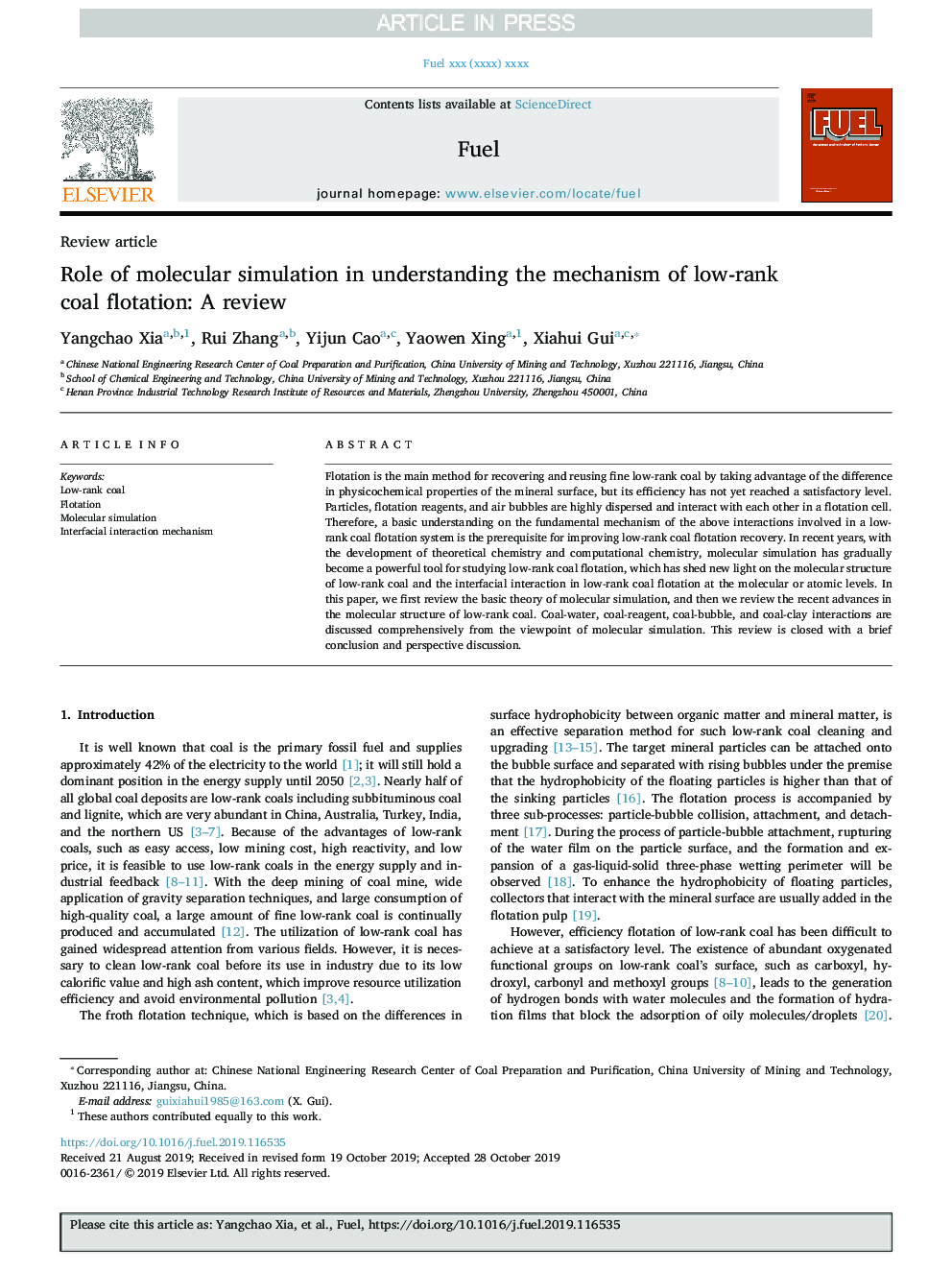| Article ID | Journal | Published Year | Pages | File Type |
|---|---|---|---|---|
| 13415939 | Fuel | 2020 | 17 Pages |
Abstract
Flotation is the main method for recovering and reusing fine low-rank coal by taking advantage of the difference in physicochemical properties of the mineral surface, but its efficiency has not yet reached a satisfactory level. Particles, flotation reagents, and air bubbles are highly dispersed and interact with each other in a flotation cell. Therefore, a basic understanding on the fundamental mechanism of the above interactions involved in a low-rank coal flotation system is the prerequisite for improving low-rank coal flotation recovery. In recent years, with the development of theoretical chemistry and computational chemistry, molecular simulation has gradually become a powerful tool for studying low-rank coal flotation, which has shed new light on the molecular structure of low-rank coal and the interfacial interaction in low-rank coal flotation at the molecular or atomic levels. In this paper, we first review the basic theory of molecular simulation, and then we review the recent advances in the molecular structure of low-rank coal. Coal-water, coal-reagent, coal-bubble, and coal-clay interactions are discussed comprehensively from the viewpoint of molecular simulation. This review is closed with a brief conclusion and perspective discussion.
Related Topics
Physical Sciences and Engineering
Chemical Engineering
Chemical Engineering (General)
Authors
Yangchao Xia, Rui Zhang, Yijun Cao, Yaowen Xing, Xiahui Gui,
